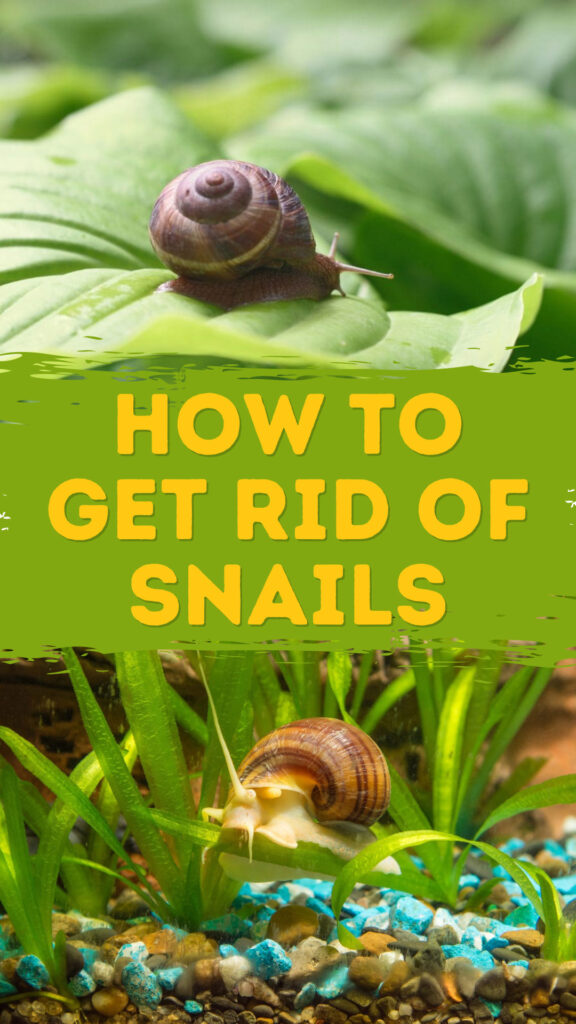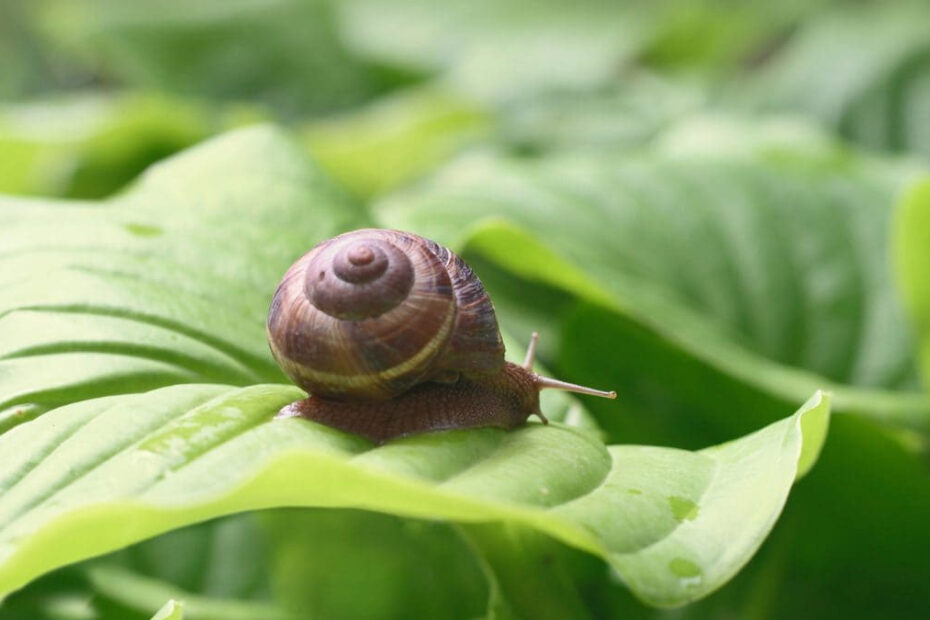Snails might seem harmless, but these slow-moving pests can wreak havoc on your garden. If you’ve noticed chewed-up leaves and slimy trails, it’s time to take action. Getting rid of snails doesn’t have to be a challenging job.
In this guide, you’ll discover effective methods to keep your garden snail-free. From natural remedies to preventive measures, we’ll cover everything you need to know to protect your plants. Say goodbye to those pesky intruders and hello to a thriving, snail-free garden.
Key Takeaways
- Understanding Snail Damage: Identify snail activity in your garden by looking for chewed leaves, slimy trails, small holes in seedlings, scalloped edges, and damaged fruits.
- Common Garden Snails: Familiarize yourself with various snail species like the Brown Garden Snail, White-Lipped Snail, Banded Wood Snail, Grove Snail, and Glass Snail for targeted control.
- Natural Control Methods: Use eco-friendly solutions like handpicking, barriers (copper tape, eggshells, coffee grounds), traps (beer, grapefruit halves), and decoy plants (lettuce, marigolds) to manage snail populations.
- Chemical Solutions: Apply snail baits (Metaldehyde, Iron Phosphate, Methiocarb) and repellents (copper-based, garlic-based, essential oil sprays) with caution to effectively control snails while minimizing environmental impact.
- Biological Control: Utilize natural predators such as ground beetles and decollate snails, and apply nematodes (Phasmarhabditis hermaphrodita) to manage snail populations in a sustainable manner.
- Preventive Measures: Maintain your garden by removing debris, trimming plants, using proper watering practices, and planting snail-resistant species (lavender, rosemary, ferns) to create a less hospitable environment for snails.

Understanding Snails In Your Garden
Identifying and understanding snails in your garden sets the foundation for effective control. Recognize the specific damage they cause and the types of snails you might encounter to tailor your management strategy.
Identifying Snail Damage
Discovering snail damage requires knowledge of their unique feeding habits and trail patterns. Look for the following signs:
- Chewed Leaves: Snails typically leave ragged, irregular holes in leaves. These holes often have smooth, clean edges.
- Slimy Trails: Silvery mucus trails are evident on leaves, stems, and soil. These trails are most noticeable in the early morning or after rain.
- Small, Round Holes: Seedlings and tender plants may show small perforations. Snails tend to target these young, soft plants.
- Scalloped Edges: Some plants exhibit a scalloped margin, indicating snail activity.
- Damaged Fruit: Snails may gnaw on fruits, leaving behind round scars or holes, especially in damp conditions.
Common Types Of Garden Snails
Several snail species might inhabit your garden, each with distinct characteristics. Familiarize yourself with the common types:
- Brown Garden Snail (Cornu aspersum): Dark brown shell with lighter brown bands. Commonly found in moist, shady areas.
- White-Lipped Snail (Cepaea hortensis): Yellow or pale brown shells often with dark brown bands. Prefers damp environments and can climb trees and shrubs.
- Banded Wood Snail (Cepaea nemoralis): Distinctive banded shell with variable color patterns. Likes gardens with ample foliage cover.
- Grove Snail (Cepaea vindobonensis): Light-colored with dark, narrow bands. Favor conditions similar to Banded Wood Snail.
- Glass Snail (Oxychilus spp.): Translucent shell, small size. Often found in greenhouses or compost heaps.
Recognize and address the specific snail species in your garden to effectively mitigate damage and maintain plant health.
Natural Methods To Get Rid Of Snails
Natural methods effectively control snail populations without harming the environment. These eco-friendly solutions can help maintain a healthy garden.
Handpicking
Handpicking is a direct method that involves removing snails by hand. This approach is most effective if done regularly.
- Inspect the garden: Check plants, especially in damp areas and under leaves.
- Best times: Look for snails early in the morning or late in the evening when they’re most active.
- Dispose properly: Place collected snails in a sealed bag and dispose of them away from your garden.
Barriers And Traps
Barriers and traps create physical obstacles or attract snails to specific areas, reducing their impact on plants.
Barriers
- Copper Tape: Place copper tape around plants. Copper reacts with snail slime, creating an unpleasant sensation.
- Eggshells: Crushed eggshells create a rough, sharp barrier that snails avoid.
- Coffee Grounds: Spread coffee grounds around the base of plants. Snails dislike the texture and acidity.
Traps
- Beer Traps: Fill shallow containers with beer. Snails are attracted to the yeast and drown.
- Grapefruit Halves: Use empty grapefruit halves upside down as traps. Snails gather inside and can be removed.
- Inverted Pot: Place an inverted flowerpot over damp soil. Snails will seek shelter inside.
Decoy Plants
Decoy plants attract snails away from your valuable garden plants.
- Lettuce: Plant lettuce away from your main garden. Snails prefer tender lettuce leaves.
- Marigolds: Use marigolds as border plants. Snails find them attractive and will gravitate towards them.
- Mustard Greens: These can serve as a sacrificial crop, keeping snails away from more important plants.
These natural methods offer various ways to manage snail populations and protect your garden without using harmful chemicals.
Chemical Solutions For Snail Control
Chemical solutions offer a reliable way to manage snail populations in gardens. These methods can be highly effective, though they require careful application to avoid harming non-target organisms.
Snail Baits
Snail Baits are a common chemical solution that you can use to control snails. These baits contain active ingredients that attract and poison snails. Here are the main types of snail baits:
- Metaldehyde-based Baits: These baits disrupt the mucus production in snails, causing them to dehydrate and die. Metaldehyde baits are highly effective but can be toxic to pets and wildlife, so they should be used with caution.
- Iron Phosphate Baits: These are a more environmentally friendly option and can be used safely around pets and wildlife. Iron phosphate baits cause snails to stop feeding, leading to their death. Products like Sluggo use this ingredient.
- Methiocarb Baits: This type of bait is potent and kills snails quickly, but it also poses risks to pets and humans. Use methiocarb baits only as a last resort and follow the manufacturer’s instructions thoroughly.
Snail Repellents
Snail Repellents deter snails from entering specific areas of your garden. These can be chemical or natural:
- Copper-based Repellents: Copper tape or mesh can be placed around plants to create a barrier. The copper reacts with the slime produced by snails, giving them a mild electric shock that deters them.
- Garlic-based Sprays: Commercial garlic sprays or homemade solutions (mixing garlic with water) can be applied to plants. The strong odor repels snails, reducing the likelihood of damage.
- Essential Oil Sprays: Oils such as rosemary, thyme, and peppermint can be mixed with water and sprayed on plants. These oils have repellent properties that snails find unattractive.
Use these chemical solutions judiciously for a balanced approach to snail control. Combine them with natural methods to minimize environmental impact while effectively protecting your garden.
Biological Control Options
Biological control uses natural predators to manage snail populations without harming the environment. These options can be effective and sustainable when integrated into an existing garden maintenance strategy.
Beneficial Insects
Beneficial insects, such as beetles and certain types of flies, can naturally reduce snail populations.
- Ground Beetles: These predators actively hunt and consume snails, particularly nocturnal species.
- Decollate Snails: Although not insects, these carnivorous snails feed on common garden snails, helping reduce their numbers.
Nematodes
Microscopic nematodes offer another biological control method.
- Phasmarhabditis hermaphrodita: This specific nematode species targets snails and slugs, penetrating their bodies and releasing bacteria that eventually kill the host.
- Application: Mix the nematodes with water and apply the solution to the garden soil. Itâs crucial to keep the soil moist to ensure the nematodes thrive and remain effective.
Prevention Tips
Preventing a snail infestation starts with proactive measures to create an environment that’s less welcoming to these pests. Employing various strategies can effectively reduce the chances of snails taking over your garden.
Garden Maintenance
Proper garden maintenance is critical in making your garden less attractive to snails. Regularly tidy your garden to remove hiding places and reduce leaf litter, which provides cover for snails.
Key Actions:
- Clean up debris: Routinely remove fallen leaves, dead plants, and other debris.
- Trim bushes and plants: Keep plants trimmed to reduce shady, moist spots where snails thrive.
- Maintain clean borders: Remove weeds and excess vegetation from garden borders.
Watering Practices:
- Water in the morning: Water plants early in the day to allow soil to dry by evening, discouraging snails that prefer moist environments.
- Drip irrigation: Use drip irrigation to keep foliage dry while providing water directly to plant roots.
Plant Choices
Selecting the right plants can deter snails from your garden. Opting for snail-resistant plants can limit their food sources and help protect more vulnerable species.
Snail-Resistant Plants:
- Lavender: Its aroma repels snails and adds a pleasant scent to the garden.
- Rosemary: The tough, woody stems deter snails.
- Ferns: Generally not favored by snails due to their tough fronds.
- Garlic: Plant garlic near susceptible plants, as its strong scent deters snails.
- Marigolds: Although marigolds can attract pests, their scent can also confuse snails and deter them from valuable crops.
Employing these prevention tips, focusing on garden maintenance and strategic plant choices, creates a less hospitable environment for snails and helps protect your garden from damage.
Conclusion
Maintaining a snail-free garden requires a multifaceted approach. By combining natural remedies, preventive measures, and selective chemical treatments, you can effectively manage snail populations without harming the environment. Remember to regularly monitor your garden for signs of snail damage and take proactive steps to minimize their presence. With consistent effort and the right strategies, your garden can thrive, free from the destructive effects of snails.
Frequently Asked Questions
What are common signs of snail damage in gardens?
Snail damage includes chewed leaves with ragged holes, slimy trails, small perforations in seedlings, scalloped edges on plants, and damaged fruit.
Which snail species are common in gardens?
Common garden snails include the Brown Garden Snail, White-Lipped Snail, Banded Wood Snail, Grove Snail, and Glass Snail.
What natural methods can I use to control snails?
Natural methods include handpicking, using barriers like copper tape and crushed eggshells, and traps made from beer or grapefruit halves. Planting decoy plants like lettuce and marigolds can also attract snails away from valuable crops.
Are there chemical solutions for snail control?
Yes, chemical solutions like Metaldehyde-based baits, Iron Phosphate baits, and Methiocarb baits can be effective but should be used with caution to avoid harming pets and non-target organisms.
What snail repellents work well?
Copper-based barriers, garlic, and essential oil sprays can deter snails from entering specific garden areas.
How can biological control options help manage snails?
Biological control options include using natural predators like ground beetles, certain flies, and decollate snails. Microscopic nematodes, such as Phasmarhabditis hermaphrodita, can also target and kill snails by penetrating their bodies and releasing bacteria.
What prevention tips can help manage snail infestations?
Prevention tips include cleaning up garden debris, trimming plants, maintaining clean borders, watering in the morning, using drip irrigation, and selecting snail-resistant plants like lavender, rosemary, ferns, garlic, and marigolds.
